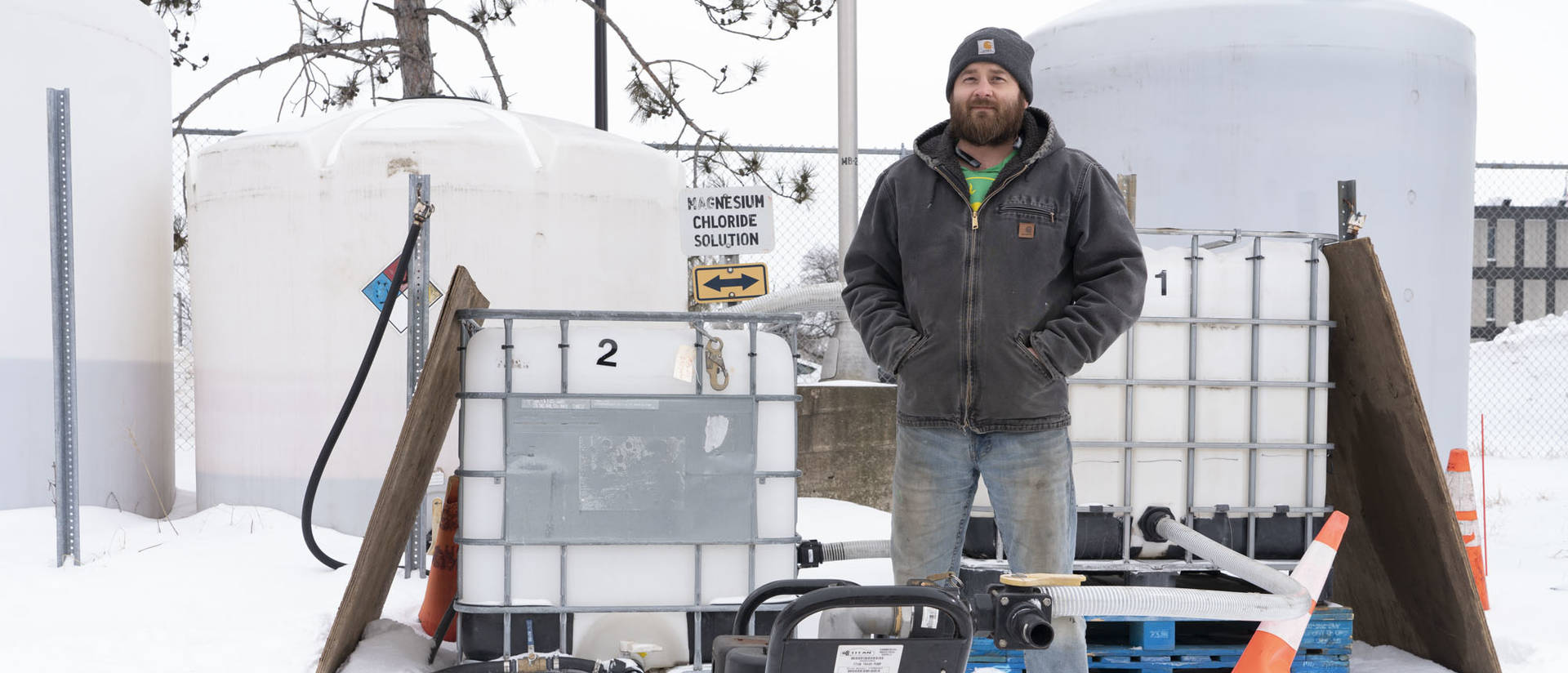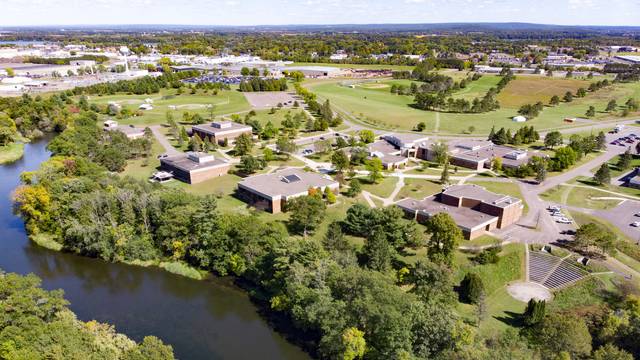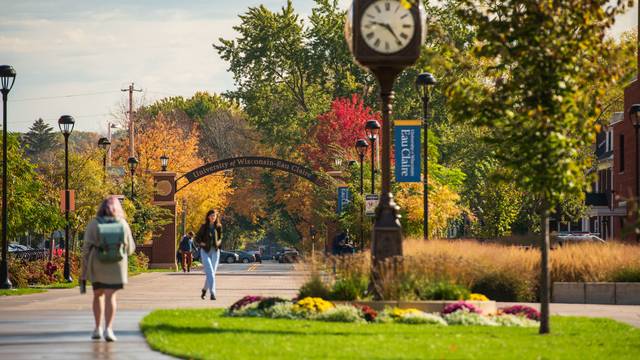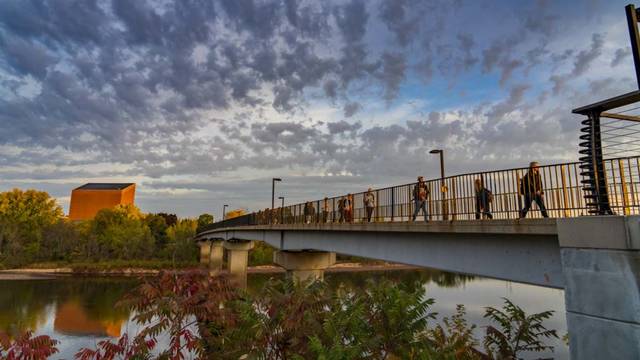Photo caption: For UW-Eau Claire Facilities, the move to brine use for de-icing was facilitated by vehicle technician Jake Seichter, who fully designed and built the machinery in-house. (Photo by Bill Hoepner)
From the ubiquitous water bottle-filling stations throughout campus to the recent switch in Blugold Dining to reusable BluBox containers, the University of Wisconsin-Eau Claire’s commitment to sustainability is increasingly evident, even to first-time campus visitors.
This winter season, a new and effective practice has been added to the list of sustainability measures on campus. Facilities Management has introduced the use of salt brine in combination with traditional rock salt for de-icing streets, parking lots and walkways — a step that will help make snow and ice removal on campus more cost-effective and environmentally friendly.
Salt brine is simply saltwater at 23% salinity, according to Aaron Turek, UW-Eau Claire’s building and grounds manager. Turek explains how the ability to pretreat roads and walkways with brine, along with the significant reduction in overall salt usage creates a major “win-win” for the university.
“We can use brine in two ways,” Turek says. “One is to put the brine on our roads before a snow event, a process called pretreating. This creates a barrier between the road surface and the falling snow, so it does not stick to the pavement as easily. Think of it like putting oil in a frying pan before you cook your food — it prevents a bond from forming and allows us to clear snow and ice more efficiently later.”
The second use for the brine is to “pre-wet” the rock salt that is used, a step that allows the rock salt to activate more immediately as it hits the ice, not needing extra time to begin melting.
“Salt needs moisture to start working as a melting agent. By wetting the salt as it is spread, it is activated immediately rather than having to pull moisture from the surrounding environment,” Turek says, further explaining reducing both cost and negative environmental impacts.
“In addition to working faster, the brine boosts the overall effectiveness of our salt, reducing the required amount by about 40%-50%. And because it makes the salt stickier, it doesn’t bounce off the roads and sidewalks into planting beds or turf.”
Turek says that another cost-reducing step taken by Facilities Management was to have the brine mixer built on campus rather than purchased. It was designed and built by Jake Seichter, an equipment technician in Facilities. Scott Lien, the lead groundskeeper, is continually perfecting the brining process and application across campus to ensure the best outcomes.
“Our crew in Facilities is keenly aware of the amazing resource that runs through this campus — the Chippewa River — and we do all that we can to ensure that as little salt as possible ends up in the river,” Turek says. “This reduction in salt is by far the biggest step we’ve taken toward that goal, but we are also exploring ways to protect the river through measures like organic fertilizers and electric mowers.”
Building on the campus sustainability goals with steps like these will have a significant payoff, says Brian Drollinger, director of Risk Management, Safety and Sustainability.
“Reducing the overall use of salt on our campus roads and sidewalks is an important way UW-Eau Claire is working to be more sustainable,” Drollinger says. “This new brine process will reduce costs and impact of street repairs, reduces the salt runoff into freshwater environments and can lead to a healthier campus. We are proud of the great work our grounds department is doing and the initiatives they are taking to help the university reach its sustainability goals.”




